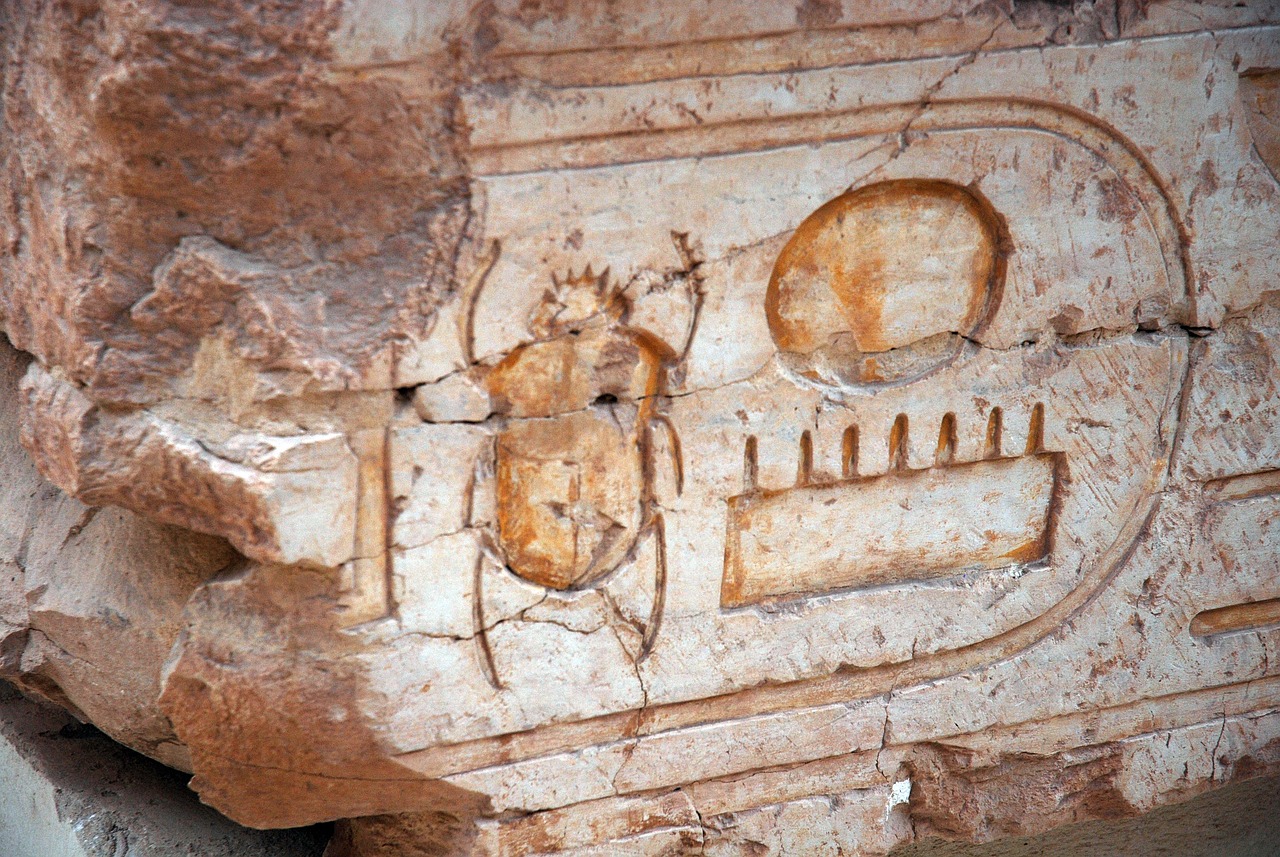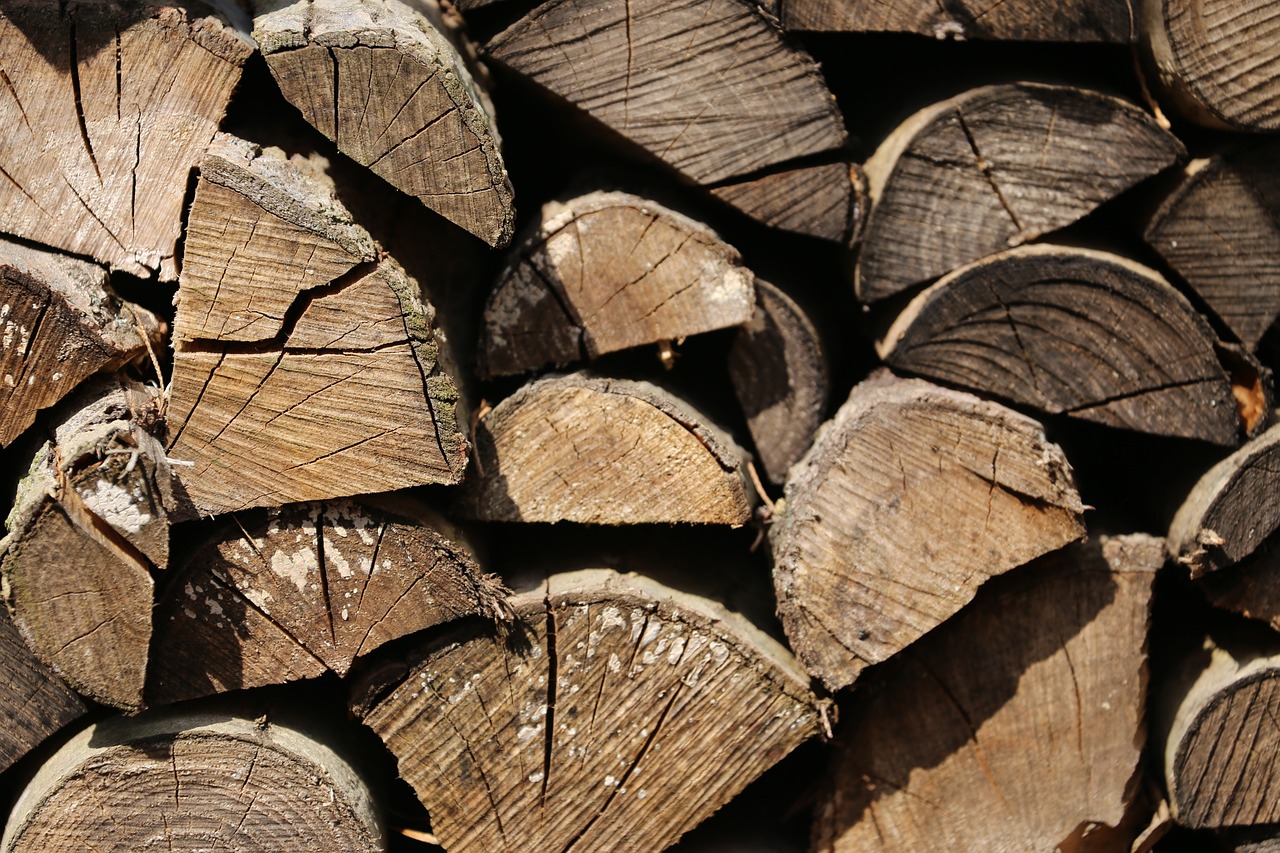Lessons from the Past - How Ancient Cultures Utilized Green Energy
In a world increasingly aware of the need for sustainable practices, it’s fascinating to look back at how ancient civilizations were already harnessing the power of nature long before the term "green energy" was even coined. These cultures, through their innovative approaches, provide us with valuable lessons on utilizing renewable resources effectively. From the sun-soaked deserts of Egypt to the windswept plains of Europe, ancient societies ingeniously turned to their environment, demonstrating a profound understanding of ecological balance. Their practices not only offer insights into energy efficiency but also inspire modern solutions that can help us combat today’s environmental challenges.
As we delve into the remarkable ways these ancient cultures utilized green energy, we discover that their methods were not merely a means to an end; they were deeply intertwined with their daily lives, economies, and spiritual beliefs. For instance, the Egyptians built their homes to maximize sunlight and reduce heat, showcasing an early form of passive solar design. This architectural wisdom is something we can still learn from today when considering energy-efficient building practices. By observing how these civilizations adapted to their surroundings, we can glean insights that not only honor their legacy but also pave the way for a more sustainable future.
Moreover, the lessons from ancient cultures extend beyond just solar energy. The utilization of wind power, for instance, was pivotal in maritime navigation and agriculture. Imagine ancient mariners skillfully harnessing the wind to propel their ships across vast oceans, establishing trade routes that connected distant lands. This not only facilitated commerce but also led to cultural exchanges that enriched civilizations. The ingenuity of wind-powered transportation and the evolution of windmills during the Middle Ages demonstrate how early societies maximized natural resources, a principle that remains crucial in our modern quest for renewable energy sources.
As we explore these historical practices, we can also reflect on the importance of biomass. Ancient cultures relied heavily on organic materials for fuel, cooking, and even metallurgy. They understood the value of recycling and waste management, converting what could be seen as refuse into energy. This sustainable approach is a reminder of the importance of integrating waste recovery into our contemporary energy solutions. By studying these ancient methods, we can appreciate the cyclical nature of energy use and the potential for innovation in waste management today.
In conclusion, the study of ancient civilizations and their utilization of green energy is not just a nostalgic journey into the past; it's a call to action for the present and future. We have much to learn from their sustainable practices, which were born out of necessity but have become increasingly relevant in our modern world. As we strive to create a more environmentally responsible society, let us draw inspiration from these ancient pioneers who lived in harmony with nature and turned their challenges into opportunities for innovation. The past holds the keys to unlocking a sustainable future, and it’s up to us to take those lessons to heart.
- What were some renewable energy sources used by ancient cultures?
Ancient cultures utilized various renewable energy sources, including solar energy for heating and lighting, wind power for sailing and milling, and biomass for fuel. - How did ancient Egyptians harness solar energy?
Ancient Egyptians utilized passive solar design in their architecture, allowing sunlight to heat their homes naturally, which is a principle still relevant in modern energy-efficient building practices. - What role did wind power play in ancient trade?
Wind power was crucial for maritime navigation, allowing ancient mariners to travel long distances, establish trade routes, and facilitate cultural exchanges across oceans. - How did ancient cultures manage waste for energy?
Many ancient societies had methods for converting organic waste into energy, showcasing an early understanding of recycling and sustainable waste management practices.

Renewable Energy Practices in Ancient Egypt
Ancient Egypt is often celebrated for its monumental architecture, rich culture, and advanced knowledge in various fields, but what often gets overlooked is their remarkable use of renewable energy. The Egyptians were pioneers in harnessing the sun's energy, showcasing an understanding of natural resources that is surprisingly modern. They employed passive solar heating techniques that are still relevant today, demonstrating a sophisticated grasp of energy efficiency long before the advent of modern technology.
One of the most fascinating aspects of Egyptian architecture is how they designed their structures to maximize sunlight during the day while minimizing heat during the scorching summer months. The orientation of buildings, the use of thick mud-brick walls, and strategically placed windows all played a crucial role in maintaining comfortable indoor temperatures. This architectural ingenuity is a testament to their ability to adapt to their environment, utilizing the sun's energy in a way that reduced the need for artificial heating and cooling.
The Egyptians also made use of solar energy in agriculture. They developed systems to optimize the use of sunlight for growing crops, effectively extending their growing season. The Nile River provided fertile soil and irrigation, but it was the sun that helped to nourish their crops. By planting crops that thrived in the sun, such as wheat and barley, they ensured a steady food supply that was sustainable and efficient.
Moreover, the ancient Egyptians recognized the importance of sustainable practices in their daily lives. They utilized natural materials like reeds and papyrus for construction and crafting, which not only showcased their resourcefulness but also their commitment to environmental stewardship. The use of these renewable resources reflects a culture that valued harmony with nature, a principle that modern societies are increasingly striving to adopt.
In summary, the renewable energy practices of Ancient Egypt offer profound insights into how civilizations can thrive sustainably. Their innovative use of solar energy in architecture and agriculture serves as an inspiration for modern energy solutions. By looking back at these ancient techniques, we can find valuable lessons that can help foster a more environmentally responsible future.
- What were the main renewable energy sources used in Ancient Egypt?
Ancient Egyptians primarily utilized solar energy through architectural designs and agricultural practices, as well as biomass from organic materials.
- How did Egyptians use solar energy in their buildings?
They designed buildings to maximize sunlight exposure for passive heating and minimized heat through thick walls and strategic window placements.
- What crops did Ancient Egyptians grow using solar energy?
The Egyptians primarily cultivated wheat and barley, which thrived in the sun-drenched environment of the Nile Valley.
- Can we learn from Ancient Egyptian practices today?
Absolutely! Their methods of utilizing renewable resources can inform modern sustainable practices in architecture and agriculture.

Wind Power in Ancient Civilizations
Wind power has been a vital source of energy for countless civilizations throughout history. From the majestic sails of ancient ships to the ingenious windmills that dotted the landscapes of medieval Europe, cultures across the globe have harnessed the power of the wind to propel their societies forward. Imagine a time when the very breath of nature was the driving force behind trade, agriculture, and even daily life. It’s fascinating to think about how these early innovators utilized the elements to create sustainable practices that resonate even today.
In ancient Egypt, for instance, the use of wind was not just a matter of convenience; it was an essential aspect of their maritime prowess. The Egyptians built sturdy sailing vessels that allowed them to navigate the Nile and beyond, facilitating trade with neighboring cultures. These ships, equipped with large sails, showcased a deep understanding of wind patterns and currents. The ability to harness wind energy for navigation opened up new trade routes, enriching their economy and fostering cultural exchanges. Can you imagine the excitement of setting sail, trusting the wind to guide you to unknown lands?
As we move through history, we find that the Middle Ages witnessed a significant evolution in wind energy technology, particularly with the advent of windmills. These structures were ingeniously designed to convert wind energy into mechanical power, primarily for milling grain and pumping water. The windmills of this era were not just functional; they became iconic symbols of agricultural advancement. Picture vast fields of grain being harvested with the help of these towering giants, their sails turning gracefully in the breeze. The impact of windmills on local economies was profound, as they enabled communities to produce food more efficiently and sustainably.
But wind power didn’t stop at milling; it also played a crucial role in transportation. Ancient cultures, from the Vikings to the Polynesians, relied on wind to propel their ships across oceans. The mastery of wind navigation allowed these civilizations to explore vast distances, establishing trade networks that spanned continents. The sheer audacity of venturing into the unknown, guided only by the wind and the stars, speaks volumes about human ingenuity and the desire to connect with others. It’s a reminder that our ancestors were not just passive observers of nature; they were active participants, finding ways to coexist with and benefit from their environment.
In summary, the utilization of wind power in ancient civilizations was a testament to human creativity and adaptability. From maritime innovations to the development of windmills, these early practices laid the groundwork for modern renewable energy solutions. As we face contemporary challenges related to energy consumption and environmental sustainability, it’s essential to look back and draw inspiration from the past. The lessons learned from these ancient cultures remind us that harnessing natural resources responsibly can lead to a more sustainable and interconnected world.
- How did ancient civilizations harness wind energy?
Ancient civilizations harnessed wind energy primarily through sailing vessels and windmills, using the wind to navigate trade routes and grind grain.
- What were the benefits of using wind power in ancient times?
Wind power provided a renewable energy source that enhanced trade, improved agricultural efficiency, and facilitated cultural exchanges.
- Are there any modern technologies inspired by ancient wind power practices?
Yes, modern wind turbines and sailing technologies are directly inspired by ancient practices, showcasing the enduring legacy of wind energy.

Maritime Innovations
When we think of ancient maritime innovations, it’s easy to picture grand ships sailing across the open seas, guided by the winds that have shaped trade and culture for centuries. The ancient mariners were nothing short of pioneers, navigating vast oceans with remarkable ingenuity. They understood that the wind was not just a natural phenomenon, but a powerful ally that could propel them toward distant lands, facilitating trade and cultural exchanges that would forever change the course of history.
Take, for instance, the ancient Egyptians, who crafted sturdy vessels that could harness the relentless winds of the Nile. These ships were not merely built for transport; they were designed with a keen understanding of aerodynamics. The sails, often made from linen, were ingeniously rigged to catch the wind efficiently, allowing them to travel upstream against the current. This mastery of wind energy not only enhanced their trade routes but also enabled them to establish connections with neighboring civilizations, spreading their culture and influence far and wide.
Similarly, the Phoenicians, known as the masters of the Mediterranean, utilized wind power to navigate their expansive trade networks. Their ships, equipped with innovative sail designs, allowed them to traverse the seas with remarkable speed and agility. The Phoenicians were adept at reading the winds and tides, which gave them a significant edge in maritime trade. They traded goods like purple dye, glass, and timber, creating a vibrant economy that thrived on the back of wind-powered vessels.
In addition to trade, wind energy played a crucial role in the agricultural practices of ancient civilizations. For example, the Vikings, renowned for their longships, used their vessels not only for raiding and exploration but also for transporting agricultural goods. The design of their ships allowed them to sail into rivers and fjords, bringing back resources that were essential for their sustenance. The interplay between maritime innovations and agriculture illustrates how ancient cultures maximized the use of natural resources to support their communities.
To further illustrate the impact of maritime innovations on ancient trade, consider the following table that highlights key civilizations and their contributions to wind-powered maritime technology:
| Civilization | Innovations | Significance |
|---|---|---|
| Ancient Egyptians | Sturdy vessels with linen sails | Enhanced trade along the Nile |
| Phoenicians | Advanced sail designs | Established vast trade networks in the Mediterranean |
| Vikings | Longships for river and ocean travel | Integrated agriculture and trade |
In conclusion, the maritime innovations of ancient cultures were not only a testament to their ingenuity but also a reflection of their deep understanding of the natural world. By harnessing the power of the wind, they were able to create thriving economies, establish trade routes, and foster cultural exchanges that would lay the groundwork for future civilizations. These early adaptations of wind energy technology serve as a reminder that sustainability and resourcefulness have always been integral to human progress.
- How did ancient civilizations navigate the seas?
Ancient civilizations used a combination of wind power, celestial navigation, and knowledge of currents and tides to navigate the seas effectively. - What materials did ancient mariners use for sails?
Most ancient mariners used materials like linen, wool, and later cotton for their sails, which were designed to capture wind efficiently. - How did wind power affect trade in ancient times?
Wind power allowed for faster and more efficient transportation of goods, which significantly boosted trade networks and economic growth in ancient civilizations.

Windmills of the Middle Ages
During the Middle Ages, windmills emerged as a revolutionary technology that transformed agricultural practices and local economies across Europe. These structures, often made of timber and later of stone, were ingeniously designed to capture the power of the wind, converting it into mechanical energy. This energy was primarily utilized for milling grain, which was essential for producing flour, a staple in the medieval diet. Imagine a bustling village where the sound of grinding grain fills the air, the smell of fresh bread wafting through the streets, all thanks to the relentless winds that turned the sails of these magnificent machines.
Windmills were not just functional; they were also a testament to human ingenuity. The most common type, the post mill, featured a rotating cap that allowed the miller to turn the sails into the wind, maximizing efficiency. As you look at these structures, you can almost see the community spirit they fostered. Villagers would gather around the mill, sharing stories and news while waiting for their grain to be processed. This social aspect highlights how windmills were more than mere machines; they were central to community life.
The use of windmills spread rapidly throughout Europe, with notable concentrations in regions like the Netherlands and England. In fact, the Dutch became famous for their advanced windmill technology, developing various types to serve different purposes, such as draining water from low-lying fields and sawing timber. The table below illustrates some common types of windmills and their specific uses:
| Type of Windmill | Purpose |
|---|---|
| Post Mill | Milling grain |
| Smock Mill | Grinding grain and pumping water |
| Tower Mill | Grinding grain and sawing timber |
Moreover, windmills played a crucial role in the evolution of agricultural practices. By enabling farmers to process their grain more efficiently, they contributed to increased food production, which was vital for supporting growing populations. This newfound ability to produce surplus grain allowed communities to thrive, paving the way for trade and economic development. The winds of change were literally blowing through the fields, ushering in a new era of prosperity.
Interestingly, the design and functionality of windmills also influenced the development of other technologies. The principles of harnessing wind energy were adapted for various applications, leading to innovations in water pumping and even early forms of electricity generation centuries later. This ripple effect shows how the ingenuity of the past continues to inspire modern renewable energy solutions.
In conclusion, the windmills of the Middle Ages were more than mere structures; they were symbols of progress and community. They harnessed the natural power of the wind, providing essential services that shaped the course of history. As we look towards a more sustainable future, it’s fascinating to reflect on how these ancient innovations can inform our modern approaches to energy and community resilience.
- What were the primary uses of windmills in the Middle Ages?
Windmills were primarily used for milling grain, but they also served other purposes like pumping water and sawing timber. - How did windmills impact medieval communities?
They fostered community spirit by bringing villagers together for milling grain and contributed to increased agricultural production. - What types of windmills were common in medieval Europe?
The most common types included post mills, smock mills, and tower mills, each designed for specific functions.

Wind-Powered Transportation
When we think about transportation in ancient times, our minds often wander to horse-drawn carriages or the early days of steam engines. However, one of the most fascinating and innovative methods of transport relied on a resource that is abundant and free: wind. Ancient cultures were not just passive observers of nature; they were keenly aware of how to harness its power. Wind-powered transportation played a crucial role in shaping trade, exploration, and cultural exchanges across vast distances.
Imagine the sight of a sleek sailing vessel gliding across the open sea, its sails billowing in the wind, carrying goods and people to distant lands. Ancient mariners were masters of this art, using wind to navigate their way through treacherous waters. The design of their ships was not merely functional but also a testament to their understanding of aerodynamics. They crafted sails that could catch the wind efficiently, allowing them to travel faster and further than ever before. This ingenuity opened up trade routes that connected different civilizations, facilitating the exchange of not just goods, but also ideas and cultures.
In addition to maritime innovations, wind power also found its way into land transportation. The invention of the windmill was a game-changer for agriculture and milling, but it also had a significant impact on how goods were transported over land. The ability to harness wind energy for various tasks meant that communities could produce more, leading to increased trade and economic growth. For instance, the wind-powered carts and wagons utilized in some regions allowed for the efficient movement of goods, reducing reliance on animal power and enhancing overall productivity.
To illustrate the impact of wind-powered transportation, consider the following table that outlines some key innovations:
| Culture | Wind-Powered Innovation | Impact |
|---|---|---|
| Ancient Egyptians | Early sailing ships | Facilitated trade along the Nile |
| Vikings | Longships with sails | Exploration and trade across oceans |
| Chinese | Wind-powered carts | Enhanced land transport efficiency |
Wind-powered transportation was not just about moving goods; it was about connecting people and cultures. The ability to travel great distances on the winds of fortune allowed civilizations to share their stories, traditions, and technologies. This interconnectedness laid the groundwork for the globalized world we live in today. Imagine the thrill of setting sail on a windy day, the horizon stretching before you, and the promise of adventure in the air. Such experiences shaped the identities of ancient peoples and fostered a spirit of exploration that is still alive in us today.
In conclusion, the ingenuity of ancient cultures in utilizing wind for transportation is a testament to their resourcefulness and adaptability. As we face modern challenges related to energy consumption and environmental sustainability, we can look back at these historical practices for inspiration. Just as our ancestors harnessed the winds to propel their journeys, we too can find innovative ways to utilize renewable energy sources in our daily lives. The lessons from the past remind us that sustainability is not a new concept; it's a journey that has been ongoing for centuries.
- What were some of the primary uses of wind power in ancient cultures?
Wind power was primarily used for sailing ships, windmills for grinding grain, and even in some land transportation methods like wind-powered carts.
- How did ancient civilizations ensure the efficiency of their wind-powered transportation?
They designed their vessels and carts to maximize aerodynamics and utilized sails that could capture wind effectively, allowing for faster and more efficient travel.
- Can we learn from ancient wind-powered transportation methods today?
Absolutely! The principles of harnessing natural resources can inspire modern innovations in renewable energy and sustainable transportation solutions.

Solar Energy in Ancient Civilizations
When we think about solar energy today, it often conjures images of sleek panels soaking up the sun's rays on modern rooftops. But did you know that ancient civilizations were already harnessing the power of the sun long before the technology we have today? In regions where sunlight was abundant, such as Egypt and the Americas, ancient peoples developed ingenious methods to utilize solar energy for heating, cooking, and even agriculture. Their understanding of natural resources was not just advanced; it was a testament to their ingenuity and adaptability in the face of environmental challenges.
For example, ancient Egyptians constructed their homes with thick mud walls and strategically placed windows to maximize passive solar heating. During the day, the sun would warm the walls, and at night, the heat would radiate back into the living space, creating a comfortable environment without the need for modern heating systems. This architectural technique is not only fascinating but also serves as a model for today's energy-efficient building designs. Just imagine how much energy we could save if we adopted similar methods!
In addition to architecture, solar energy played a crucial role in agriculture. Ancient farmers in arid regions, like the Incas and the Native Americans, used sunlight to dry crops and preserve food. They understood the importance of timing their planting and harvesting with the seasons, ensuring they took full advantage of the sun's energy. The practice of sun-drying fruits and vegetables is still prevalent today, showcasing the long-lasting impact of these ancient techniques.
Moreover, the ancient Greeks and Romans also had their share of solar innovations. They built large, open-air spaces that captured sunlight, allowing warmth to permeate their homes and public buildings. This concept of solar architecture not only provided comfort but also reduced the need for burning wood or other fuels, illustrating an early commitment to energy conservation and environmental responsibility.
Interestingly, the solar practices of ancient civilizations didn't just end with architecture and agriculture. They also engaged in solar worship, recognizing the sun's vital role in their survival. Temples and monuments were often aligned with the sun's path, reflecting a deep reverence for this powerful energy source. This spiritual connection to the sun highlights the multifaceted relationship between humans and nature—a relationship that modern society often overlooks.
To summarize, ancient civilizations showcased remarkable ingenuity in utilizing solar energy. Their methods of passive heating, agricultural practices, and architectural designs not only provided immediate benefits but also laid the groundwork for the sustainable practices we strive for today. By learning from these historical examples, we can inspire a future that respects and harnesses the power of renewable resources.
- How did ancient civilizations harness solar energy? Ancient civilizations utilized solar energy through architectural designs that maximized passive heating and by employing agricultural practices that relied on sunlight for drying and preserving food.
- What are some examples of solar energy use in ancient Egypt? The Egyptians built homes with thick mud walls and strategically placed windows to capture and retain heat from the sun, creating a naturally warm living environment.
- Did ancient cultures worship the sun? Yes, many ancient cultures, including the Greeks and Romans, had spiritual connections to the sun, often aligning their temples and monuments with its path.
- What can modern society learn from ancient solar practices? Modern society can learn the importance of energy conservation, sustainable building practices, and the value of integrating natural resources into daily life.

Biomass and Its Historical Uses
Throughout history, biomass has played a pivotal role in the energy landscape of ancient cultures. From the earliest days of human civilization, societies have relied on organic materials, primarily derived from plants and animals, to meet their energy needs. This practice not only highlights the ingenuity of our ancestors but also underscores the importance of sustainable resource management, a lesson that resonates even today. The utilization of biomass was not merely a matter of necessity; it was an intricate part of daily life, fueling everything from cooking to heating and even metallurgy.
One of the most common forms of biomass used in ancient times was wood. It served as the primary fuel source for cooking and heating homes. The process of gathering wood, however, was not just about survival; it often involved communal activities that fostered social bonds. Imagine a group of villagers coming together to collect firewood, sharing stories and laughter, all while ensuring that their families would be warm and fed. This communal effort exemplifies how energy practices were intertwined with cultural traditions.
Another significant biomass resource was charcoal, which was created by burning wood in a low-oxygen environment. Charcoal was preferred for its high energy content and efficiency, making it an essential resource for ancient metallurgy. Blacksmiths relied on charcoal to produce the high temperatures required for forging tools and weapons. The transition from wood to charcoal in metalworking not only improved efficiency but also showcased the innovative spirit of ancient cultures. This shift was akin to upgrading from a bicycle to a motorcycle in terms of performance and capability.
In addition to wood and charcoal, ancient cultures also demonstrated remarkable ingenuity in managing organic waste. Many civilizations developed methods to convert waste materials into energy, a practice that reflects an early understanding of sustainability. For instance, ancient farmers would often use animal dung as fuel for cooking and heating. This practice was not only practical but also served as a form of waste management, reducing the impact of waste on their living environment. The circular economy principles that we discuss today were, in many ways, already in practice thousands of years ago.
To further illustrate the historical significance of biomass, consider the following table that outlines various biomass resources and their uses in ancient civilizations:
| Biomass Resource | Uses | Ancient Civilization |
|---|---|---|
| Wood | Cooking, Heating | Various Cultures |
| Charcoal | Metalworking | Egyptians, Romans |
| Animal Dung | Fuel, Fertilizer | Chinese, Native Americans |
| Crop Residues | Fuel, Soil Enrichment | Mesopotamians |
As we explore the historical uses of biomass, it becomes clear that these ancient practices offer valuable lessons for modern society. In an age where environmental concerns are at the forefront of global discussions, looking back at how our ancestors utilized natural resources can inspire innovative solutions for today’s energy challenges. By embracing the principles of biomass energy, we can foster a more sustainable future, ensuring that we honor the legacy of those who came before us.
- What is biomass? Biomass refers to organic materials, such as plants and animal waste, that can be used as fuel for energy.
- How did ancient cultures use biomass? Ancient cultures used biomass for cooking, heating, and even in metallurgy, showcasing their resourcefulness.
- What are the benefits of using biomass? Biomass is renewable, can reduce waste, and helps in maintaining sustainable energy practices.
- Can modern technology improve biomass energy use? Yes, modern technology can enhance the efficiency of biomass conversion and utilization, making it a viable energy source.

Wood and Charcoal in Daily Life
In ancient times, wood and charcoal were not just materials; they were lifelines that sustained entire communities. Imagine living in a world where the flicker of a flame not only provided warmth but also cooked your meals and forged your tools. Wood, in its natural form, was readily available, making it the primary source of fuel for cooking and heating. Charcoal, on the other hand, was a refined product created from wood, offering a more concentrated energy source. This transformation not only improved efficiency but also reduced smoke, making it a favored choice for indoor cooking.
The versatility of wood was astounding. It was used in various forms: logs for fires, branches for kindling, and even sawdust for insulation. Charcoal, produced through the pyrolysis of wood, became essential for metallurgy and blacksmithing. The ancient Egyptians, for instance, utilized charcoal to smelt copper and bronze, showcasing their advanced understanding of materials. This practice laid the foundation for future technological innovations. The use of these resources was not merely a matter of convenience but a testament to the ingenuity of ancient cultures in utilizing what nature provided.
Moreover, the daily life of ancient peoples revolved around the management of these resources. Communities developed systems to sustainably harvest wood, ensuring that forests were not depleted. They understood the importance of maintaining a balance with nature, a principle that resonates with modern sustainable practices. The cycle of cutting down a tree and allowing new ones to grow was a practice of foresight, demonstrating a deep respect for the environment.
Interestingly, the methods of charcoal production were quite labor-intensive. Charcoal makers would create large mounds of wood, covering them with soil to limit oxygen flow, allowing the wood to burn slowly. This process, known as carbonization, produced charcoal that was lighter and easier to transport than raw wood. The resulting product was crucial for trade, as it was highly valued in regions where wood was scarce.
In essence, wood and charcoal were more than just resources; they were integral to the social and economic fabric of ancient civilizations. They fostered community gatherings around the hearth, where families shared stories and knowledge, strengthening bonds. The warmth of the fire symbolized not just physical comfort but also the spirit of togetherness that characterized ancient life.
As we reflect on these practices, it’s clear that the lessons learned from ancient wood and charcoal usage can inform our modern energy solutions. Today, as we face the pressing challenges of climate change and resource depletion, revisiting these sustainable practices offers a pathway to a greener future. By understanding how our ancestors thrived using natural resources, we can inspire a new generation to embrace eco-friendly practices that honor the earth.
- What were the primary uses of wood and charcoal in ancient cultures?
Wood and charcoal were primarily used for cooking, heating, and metallurgy. They played a crucial role in daily life and technological advancements. - How did ancient civilizations ensure sustainable harvesting of wood?
Ancient cultures practiced sustainable harvesting by managing their forests and allowing new trees to grow, maintaining a balance with nature. - What is the process of making charcoal?
Charcoal is produced by carbonizing wood in a low-oxygen environment, which allows the wood to burn slowly and results in a lighter, more efficient fuel source. - Why is understanding ancient practices important for modern energy solutions?
By learning from ancient practices, we can adopt sustainable methods that respect the environment and contribute to reducing our carbon footprint.

Waste Management and Energy Recovery
In ancient cultures, the concept of waste management wasn't just about keeping the environment clean; it was also about maximizing resources. Imagine living in a time when every bit of organic material was seen as a potential source of energy rather than mere refuse. This innovative mindset allowed civilizations to convert waste into valuable energy, fostering sustainability long before the term became popular.
One of the most fascinating aspects of ancient waste management practices was the use of organic waste for energy recovery. For example, the Romans were pioneers in this field. They developed sophisticated systems to collect waste from their cities, including food scraps and animal manure. Instead of allowing this waste to rot away, they cleverly utilized it to produce biogas, which powered their public baths and even some of their homes. This early form of biomass energy highlights how resourceful these societies were in their quest for energy efficiency.
Furthermore, ancient agricultural societies often practiced a form of composting, where leftover plant materials were returned to the soil to enhance fertility. This not only reduced waste but also created a cycle of sustainability that benefited their crops. By turning waste into compost, they improved soil health, increased yield, and reduced the need for chemical fertilizers, which are harmful to the environment.
To illustrate the various methods employed by ancient cultures, consider the following table that outlines some notable practices:
| Civilization | Waste Management Practice | Energy Recovery Method |
|---|---|---|
| Romans | Collection of organic waste from cities | Biogas production for heating |
| Mesopotamians | Composting agricultural waste | Soil enhancement for crop production |
| Chinese | Utilization of human waste in agriculture | Fertilizer production and soil enrichment |
This historical perspective on waste management and energy recovery sheds light on how ancient societies were not only aware of their environmental footprint but also actively sought ways to minimize it. They understood the importance of recycling organic materials, which allowed them to create a sustainable cycle of energy and resources. In many ways, they were the original environmentalists, long before the modern movement took shape.
Today, as we face the challenges of waste disposal and energy production, we can draw inspiration from these ancient practices. By embracing the principles of recycling and energy recovery, we can work towards a more sustainable future. Just like our ancestors, we have the opportunity to turn waste into a resource, thus reducing our environmental impact and fostering a more responsible approach to energy consumption.
- What is biomass energy? Biomass energy is derived from organic materials, such as plant and animal waste, which can be converted into usable energy.
- How did ancient civilizations manage waste? Ancient civilizations utilized various methods including composting and converting organic waste into energy to reduce refuse and enhance soil fertility.
- Can modern societies learn from ancient waste management practices? Absolutely! Modern societies can adopt similar principles of recycling and energy recovery to promote sustainability and reduce environmental impact.
Frequently Asked Questions
- What renewable energy sources did ancient cultures use?
Ancient cultures utilized a variety of renewable energy sources, including solar energy, wind power, and biomass. For instance, the Egyptians harnessed solar energy through architectural designs that maximized passive heating. Similarly, wind power was effectively used in sailing vessels and windmills, while biomass, such as wood and charcoal, served as essential fuel sources in daily life.
- How did ancient Egyptians utilize solar energy?
Ancient Egyptians had a remarkable understanding of solar energy. They designed their homes and public buildings to capture sunlight, allowing for natural heating during the day. This architectural ingenuity not only provided comfort but also reduced the need for additional heating sources, showcasing an early example of energy efficiency.
- What role did wind power play in ancient civilizations?
Wind power was crucial for trade and agriculture in ancient civilizations. From sailing ships that navigated trade routes to windmills that powered grain milling, wind energy facilitated economic growth and cultural exchanges. These innovations highlight how ancient peoples maximized natural resources for their benefit.
- How did ancient societies use biomass for energy?
Biomass was a vital energy source for ancient societies. They relied on wood and charcoal for cooking, heating, and even metallurgy. Additionally, some cultures developed methods to convert organic waste into energy, demonstrating an early understanding of sustainable practices that we can learn from today.
- What can modern societies learn from ancient energy practices?
Modern societies can draw valuable lessons from ancient energy practices by embracing renewable resources and sustainable methods. By studying how ancient cultures effectively utilized solar, wind, and biomass energy, we can inspire contemporary solutions that promote environmental responsibility and energy efficiency.



















